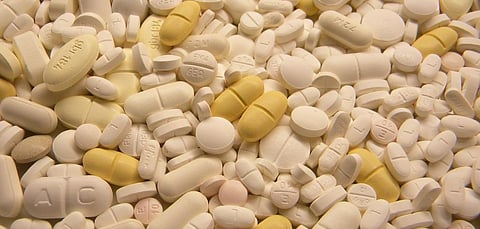Govt's fast tracking of draft rules on antibiotic residues commendable
Earlier this week, the Union Ministry of Environment, Forest and Climate Change (MoEF&CC) put out the draft standards for antibiotic residues in the treated effluents of the pharmaceutical industry. The draft, which will be titled the Environment (Protection) Amendment Rules, 2019, provides stringent limits for 121 antibiotics.
It is also applicable to treated effluents from common effluent treatment plants (CETP) with membership of bulk drug and formulation units.
The draft rules have been put out for 60 days in order to elicit comments from the public. If notified, India will become the first country in the world to have legally enforceable discharge limits for antibiotics in waste from the pharmaceutical industry.
The pharma industry is a known hot spot with respect to Antimicrobial Resistance (AMR), which is a rising public health threat.
It all started when the Delhi-based non-profit Centre for Science and Environment (CSE) pushed for setting standards for antibiotics in waste from the pharmaceutical industry as part of the team that developed India’s national action plan on AMR in 2016.
India’s action plan, that was released in April 2017, called for the development of these standards and the Central Pollution Control Board of India (CPCB) in September 2017 constituted an expert panel to take the matter forward and draft such standards.
CSE was part of this panel along with the pharmaceutical industry, scientific community and health experts. It strongly advocated the need and importance of setting these standards to contain AMR. It also said that it was technically and economically feasible to limit antibiotic residues in manufacturing effluents.
“We were clear that antibiotics in waste are hazardous in view of AMR and stringent limits should be set to check their presence in waste from the pharmaceutical industry. We emphasised that India should not wait for other countries to set such standards as we are one of the biggest antibiotic producers and it is our own problem to fix,” Amit Khurana, who was part of the CPCB-led expert panel, said.
Though delayed, the move by the CPCB and the MoEFCC is commendable. It will not only help the Indian AMR scenario but also position India as a responsible nation towards tackling the AMR menace.
Considering that India is one of the largest antibiotic manufacturers globally and also exports a significant amount to other countries, this move is expected to go a long way in containing AMR through industrial pollution sources.
“It is important that this draft does not get diluted and is notified as soon as possible. It will be a milestone in India’s efforts to contain AMR,” Khurana added.
Rajeshwari Sinha is Deputy Programme Manager, Food Safety and Toxins, Centre for Science and Environment, New Delhi


